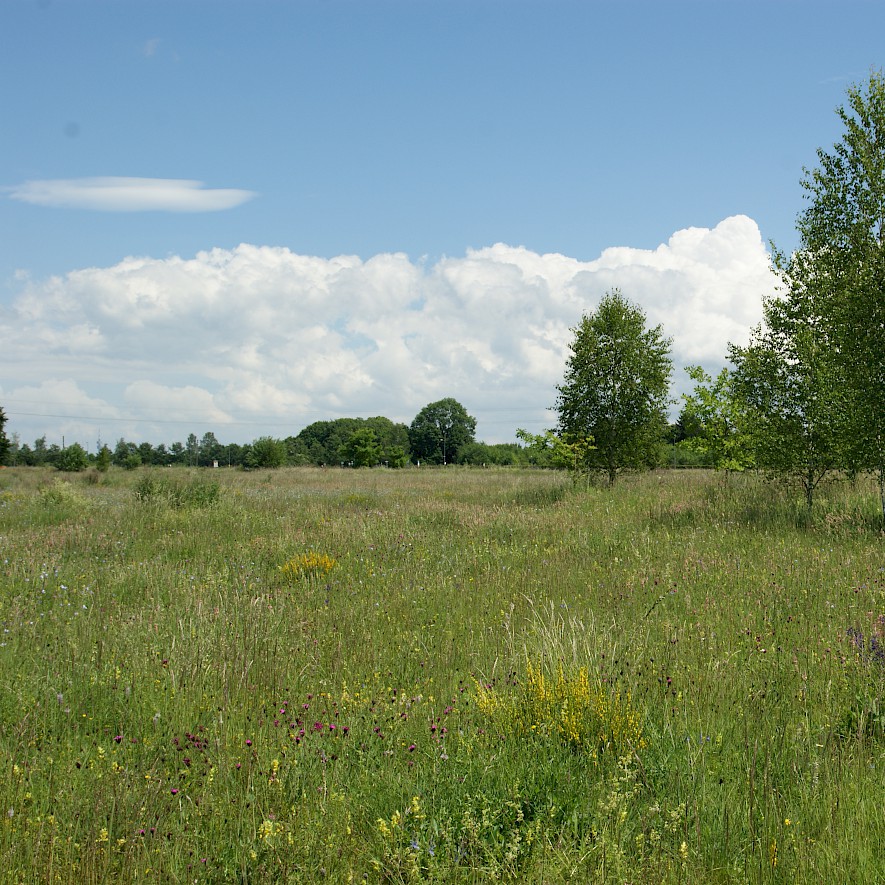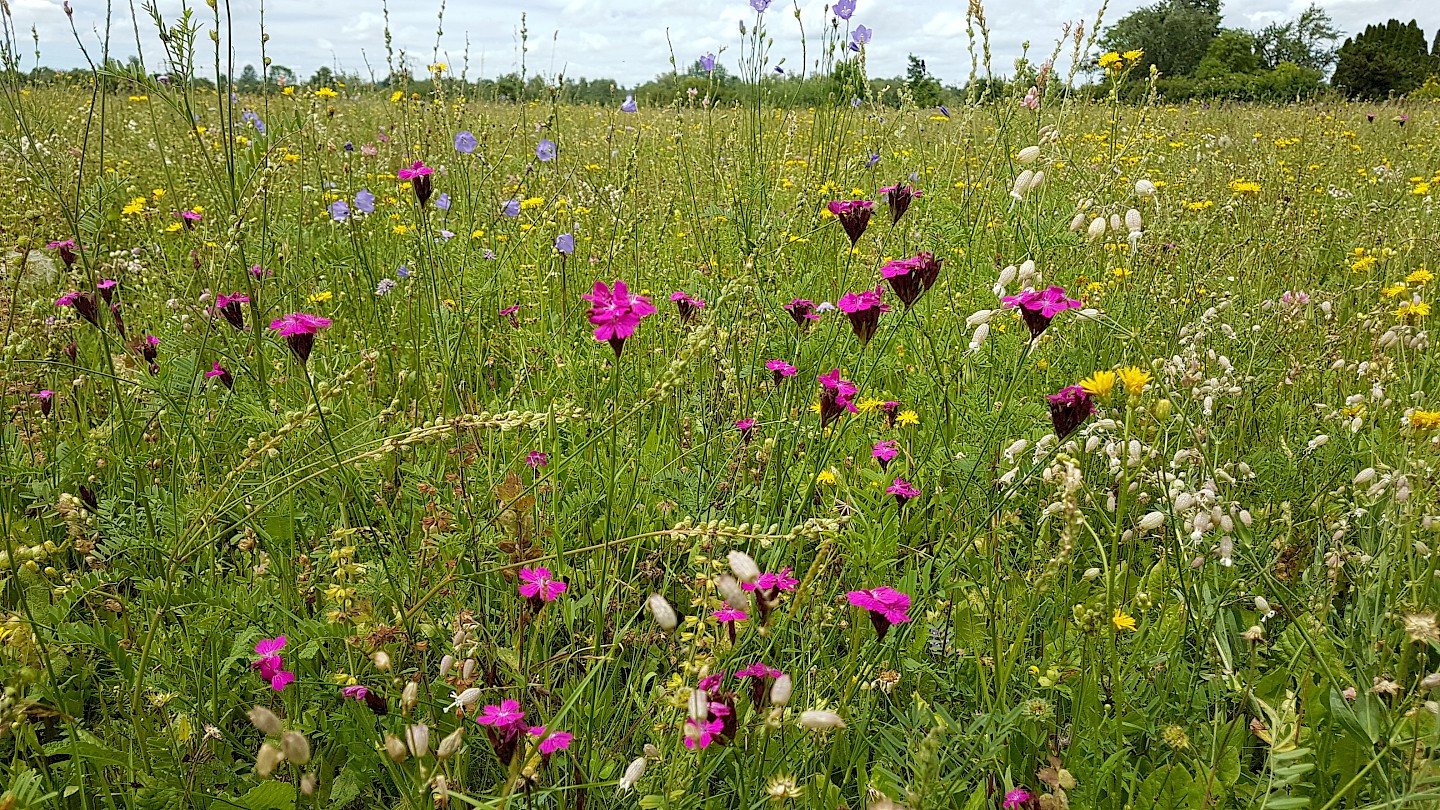Since 2009, meadows and rough grasslands have been developing on set-aside farmland on Langwieder Haide and, together with field copses and hedges, form an important habitat for plants and animals. Dyer's broom, carthusian carnation, daisies, and sweetgum bloom on the gravelly, open sites.
On the buds of the cross gentian, the phengaris alcon (alcon blue) lays its eggs. For a long time, this butterfly was considered lost in the urban area, but it was recently rediscovered on Langwieder Haide.
The skylark also lives here. The female protects her offspring in a padded hollow on the ground, while the male sings high above the nest to mark his territory. The sand lizard benefits from low gravel banks with scattered shrubs. These provide it with hiding and hibernation sites and connect its habitats.
Originally, the Munich grass heaths were kept open by sheep grazing, but today the areas are mowed in sections.






